Timbertech vs. Ipe vs. other composites
So I've read just about every posting I can find anywhere about decking materials. I live in Seattle and our deck will be north-facing so there's no way we're doing standard wood. Everyone around here ends up regretting regular decks with how fast the finish wears and the wood rots. I thought we wanted composite but then got completely confused about which brand. Trex is too fake looking for me. John speaks well of Timbertech but I guess I just don't understand why it would be a better choice over the competition. I'd be willing to splurge for Ipe but am not sure about the affect on the rainforest. Seems like those particular hardwoods are not a sustainable crop and I don't really want to contribute to deforestation (kind of a thing I've got in my head having grown up seeing clearcutting here in the Northwest).
Any input on...
-- Why Timbertech is better
-- The environmental impact of Ipe
-- Other composite products installers or homeowners have long term experience with (say either installed it several times and/or have it on your house for several yesrs)
...would be MUCH appreciated! Our back yard is a huge mound of dirt and I'm anxious to make a decision and get going so I can get my little guys outdoors during the day. Links to pictures also much appreciated.
Thanks!
Britt
Comments (34)
Britt
Original Author16 years agolast modified: 9 years agoSo after posting I saw a link to the Environmental Home Center and the Tigerwood decking they sell. From the details on the site it sounds like Tigerwood might be better environmentally than Ipe. Anyone know about this? Have any experience installinging or owning a Tigerwood deck?
Here is a link that might be useful: Tigerwood Decking
Related Professionals
Columbia Decks, Patios & Outdoor Enclosures · Issaquah Decks, Patios & Outdoor Enclosures · Salt Lake City Decks, Patios & Outdoor Enclosures · Accokeek Home Builders · Immokalee Home Builders · Lansing Home Builders · Warrensville Heights Home Builders · Branford Flooring Contractors · Desert Hot Springs Flooring Contractors · Easton Flooring Contractors · Laurel Siding & Exteriors · Annapolis Siding & Exteriors · Beverly Hills Siding & Exteriors · Manassas Siding & Exteriors · Brookfield Siding & ExteriorsBritt
Original Author16 years agolast modified: 9 years agoWow, DK! I can't tell you how much I appreciate your detailed explanation of the sustainability of the Brazilian forests. I've suspected for awhile that the average middle-class American like me does a reasonable amount of damage to this planet with our gas and energy consumption, the amount of disposable materials we throw away, what we do with our homes and yards. But like anyone, I enjoy the comforts of modern life and would have a hard time giving them up. But if there's an opportunity to choose materials for my home that are long-lasting, beautiful, helpful to the global economy, and not too hard on the earth then I'm all for it. Sounds like either tigerwood or ipe could fit the bill.
Quick follow-up question. You say you sell more massaranduba to Europe. Is there a reason? I'm not sure I understand the difference between Ipe, massaranduba (Brazilian redwood), Tigerwood, etc. Is it just appearance or is one more durable than the other? Harder or easier to work with?
Thanks! (Or should I say obrigado?)
BrittP.S. I came to work in Sao Paulo a couple of times but never made it out of the city. Have to say some of the best food I've ever eaten anywhere in the world was there. Barbacoa. Amazing salad bars. Those little round cheese roll things. Yum!
jdew1920
16 years agolast modified: 9 years agoGood Info. I've been considering Cumaru for a deck and have been feeling a little bit guilty about the environmental impact.
Any comments on Cumaru?
amazondk
16 years agolast modified: 9 years agoBarbacoa is one of my favorite restuarants. We have one here in Mansus.
As to wood I know the person who put tigerwood on the US market and he has a very reputable company with a good product. The product is of high quality. One of the difference with ipe an tiger wood is that ipe is very stable and does not need to be air dried. As to the Massranduba to Europe the main reason is that we can sell air dired massaranduba for a price better than kiln dried massranduba to the USA. The climate in Europe is different and therefore the requirements of moisture content are less demanding. Massaranduba trees have more defects than ipe or tiger wood and this is also a factor. But, one of the most common species in my part of amazonia is massranduba. It is a beautiful very resistant wood.
dkhome_crap_home
16 years agolast modified: 9 years agodk,
Like other posters I would like to use Ipe, but I'm worried about what's going on in the Amazon. The law enforcement you wrote about sounds great, but National Geographic paints a completely different picture. Basically, that anti-deforestation laws exist, but are unenforceable.
Here's the first line from the story: "In the time it takes to read this article, an area of Brazil's rain forest larger than 200 football fields will have been destroyed."
Here's another: "Scientists fear that an additional 20 percent of the trees will be lost over the next two decades. If that happens, the forest's ecology will begin to unravel."
I'm not trying to be argumentative, and I'm only searching for information. Your post makes it sounds like deforestation is under control. According to NG, it's completely out of control.
Here's a final paragraph: "...nearly every road in the Amazon is unauthorized. There are more than 105,000 miles of these roads, most made illegally by loggers to reach mahogany and other hardwoods for the lucrative export market. In Brazil, the events set in motion by logging are almost always more destructive than the logging itself. Once the trees are extracted... the roads serve as conduits for...squatters, speculators, ranchers, farmers, and invariably, hired gunmen."
I'm assuming that the "lucrative export market" is us.
How does your experience compare with what NG is reporting?
Here's the article:
"Farming the Amazon: Last of the Amazon"
http://green.nationalgeographic.com/environment/habitats/last-of-amazon.htmlThanks for all the information and the time you've taken so far to reply.
amazondk
16 years agolast modified: 9 years agoRegarding the National Geographic article I read this as well. It is not that information is incorrect. But it is not the whole story. Far from it. Most people do not know this, but at the time the Europeans invaded Amazonia there were up to 10 million people living here. Thes people had a major impact on the ecosystem. The estimates are that as much land was deforested in 1500 as is today, aproximately 15 percent. The pattern was different though. The land converted from forest teneded to be smaller plots spread over the region. Today there are 20 million people in the Brazilian amazon region. An important thing is realize just how large and how unaccessable much of the area is. The Brazilian Amazon is about as large as half of the USA. The state I live in Amazonas has 98 percent of the forest intact, and this is over one third of the region.
Check out this link, http://www.imazon.org.br/home/index.asp?lg=en . This organization Imazon was one of the sources for the National Geographic article. You can download a pdf document titles Human Pressure on the Amazon. This shows very clearly what the state of the area is. Like most things in Brazil the government and it's employees have been one of the main problems. The laws have not been enforced correctly as many of the officials have preffered personal gain, corruption, over law enforcement. And, in many cases it has been easier to work illegally than within the law. Most businessmen would preffer to work within the law and avoid problems. The forest management law passed last year moved forest management from the federal government, IBAMA, to the states. This is good as the states tend to be less corrupt and have better infra structure than the federal government.
Back to your question whether deforestation is out of control or not. I do not believe it is out of control at all. Most deforestation is illegal and with sattelite monitoring and better enforcement this is getting easier to monitor and control. The new law which allows for forest concessions for lumber production under sustainable forestry practices is a very positive development and will allow for increased productivity of the forest. Also the squatters mentioned for the most part are poor farmers who are given land, 50 hectare plots, by the federal government. These people many times do not stay on the land they get and move elsewhere. The whole situation is much more complex than one article can portray. Huge areas of the region are locked up in parks, conservation units, and indian reservations.
The site I mentioned above should give you a pretty good idea of things. I started working in this business only 2 years ago and thought about it a lot before. I love the region and its forests. It is a wonderful place to live. And, the last thing I want is to see it destroyed. And, I do not believe that is what is going to happen. My suppliers, lumber producers, want to work legally and preserve the standing forest. They want to have a future for their families as well and know that they can not do this destroying their resource. The NGOs which which make such noise at times I feel are more interested in their own political and financial agendas than the welfare of the people of our region. People with jobs and income preserve their resouurces much better.
As to wood all of the hard wood species from here are great for deck.
dk
A scene of the Amazon where I live.
Here is a link that might be useful: Imazon - Forest Information
amazondk
16 years agolast modified: 9 years agoJust another note. To get a permit for deforestation a project has to be submitted with geo coordinates, size, etc, and a list of species. Once approved the person extracting the timber has to buy 8 trees per cubic meter harvested from a certified reforestation project. The average size of a tree is about 2 cubic meters when harvested.
A scene of deforestation, a cow pasture. Along the highways an area of up to 1 km is often deforested for this use. Beyond is standing forest. That is a brazil nut tree in the upper left hand corner of the photo.
shadow700
16 years agolast modified: 9 years agoWith regards to environmental impact only:
(1) None of the local or national Green Building organizations in the US consider Ipe a sustainable resource. From what I understand, they've never been able to guarantee that the wood is sourced in a sustainable manner. Maybe this will change in the future if what amazondk is saying is verified by the governing bodies.
(2) One thing that cannot be changed with respect to Ipe is the environmental impact for product delivery. Sourcing a product from so far away is generally frowned upon (ie - hurts you when trying to higher certifications) in sustainable building.
(3) When doing the recycled source material calculations, Timbertech would get a 10% recycled content (10% post-consumer) credit. For comparison, Trex gets a 100% recycled content (90% post consumer) credit, which is probably why it is the only decking material I ever see on green project manifests.
john_hyatt
16 years agolast modified: 9 years agoHi Don!! good to see you again. Great info as usuall and thanks for the pictures I will add them to the ones you sent before, very good work over there mabey I will come visit some day. John
amazondk
16 years agolast modified: 9 years agoThanks John,
The peacock bass fishing season gets good around September.
I hope I am not providing too much information here and I do not make a habbit of writing on this subject. And, I hope it is useful to some.
Regarding tracking wood products from source. If you purchase certified material such as FSC you can actually go to the stumps where the tree was cut for the lot of material that was shipped that makes up the product you purchase. That is due to the chain of custody procedure in FSC certified operations. One of our major customers is one of the largest FSC certified companies in Europe. We source non-certified material for them as a compliment to their own certified material. In general Europe is more focused on environemental issues than the USA is as well. And, they use a lot more tropical timber. I know exactly the source of the wood we ship from our suppliers.
It is true that a lot of ipe shipped to the US market as deck has come from land converted to ranches and soy bean plantations over the years in the states of Mato Grosso and Para in northern Brazil. And, much of this was done as a result of illegal deforestation and irregular documentation. There was a drastic reduction in deforestation in Mato Grosso state, tradtionally with the greatest problem of illegal deforestation, over the past year and a half. This has been due to the elimination of a lot of the corruption in the control agencies, better enforcement, and more efficient monitoring. By making documentation very difficult to falsify with the new computerized on line system it is difficult to transport and sell illegal material, especially for exports. Soy beans are really one of the major factors in forest conversion as their cultivation has moved north as production has exanded. Much of these go to make animal feed in the interational markets. It may make more sense to control soy bean production than wood production to reduce impacts on the forest.
And, in the end I do not think many end use consumers care where material comes from. They just want something of value that looks nice. This I think is true from hardwood decking as well as flooring. As I stated above this type of activity is becoming less common due to changes in control systems and monitoring which make it much more difficult to operate in this fashion than in the past.
One of the other good things about Europe is that they accept more species of wood than the USA. The tropical forest has great variety and the more species that are consumed the more efficient forest management is. In an area with good concentrations of ipe for example you may only get 1 tree per acre at the most. Where you may be able to harvest 5 trees of legal size. This is trees of over 50 cms in diameter. And, species run in groups or veins in the forest, they are not spread all over the place for the most part. The idea is that you go into an area once in 25 years. If you are looking for only one or few species at a time the same area may be disturbed more frequently. This has happened in the past and degrades forest as a consequence. There may be up to 20 species of commercial value trees in a project. And uses for them need to be found. The export market only consumes a small variety of these. Since the export market is about 35 percent of the total production the local national market absorbs most of the rest in one form or another.
One thing that I do know is that our material is legal and I know where it comes from. Our customers require that we know this and produce documentation to back it up.
These logs are from one of our suppliers and were staged at roadside for pick up. The land where they came from is a ranch with an approved project within legal guidelines. In addition to the inspection of documents the state environmental agency physically visits the location for inspection of such a project before approval.
The logs with the thicker bark are massaranduba. This area has vey little ipe, but a lot of massaranduba.jas0n
16 years agolast modified: 9 years agoBrittu,
We just completed our ipe deck and we live in the burbs of seattle, on the east side. If you decide to use ipe you should speak with Rick at East Teak in Sultan, WA. Many people on this board speak highly of the company (including John) and deal with a fellow named George in the east coast location. I received great service from Rick, he even opened special on a Saturday morning so I could pick up our 450+ ft of wood to save on the delivery fee! Out of the 62 18' boards we purchased there were none with damage or any flaws that made them unusable, the wood is incredible. Drop me an email if you would like to see pictures of our project and you could always stop by and take a look if you are ever in the neighborhood, we're very proud of it, love to show it off, and would love to send some business Rick's way!
brooklyndecks
16 years agolast modified: 9 years agoHey Don,
Thanks for the informative messages and pics. It's good to have a friend at the source. I have clients that are concerned about the rain forest, and I can direct them here to read your messages.
I really like massaranduba. I haven't worked with it here in Brooklyn, but we have it in Costa Rica...called nisporo. Very hard and nice color.
steve
amazondk
16 years agolast modified: 9 years agoSteve,
I hope you are doing well. Massaranduba is a great wood. But, it does have some problems. The logs have quite a few defects and the yield is not as good as ipe. And, in dry climates the wood needs to be kiln dried. In northern Europe this is not much of a problem. The humidity is higher than much of the USA. And, they purchase the antislip profile which hides some of the defects that pop up when the wood dries. Since the price for air dried Massaranduba decking sold to Europe is as good or better than the price of kiln dried Massranduba in the States it is a better deal to supply wood to Europe. In spite of this there is probably 20 massaranduba trees in the region for 1 ipe tree. This of course varies with the forest area being worked. But, more than likely as an average this is pretty close. As to durablity massaranduba is every bit as durable as ipe. And, it is a beautiful wood.
dk
amazondk
16 years agolast modified: 9 years agoHere is a comparision of the Amazon region in South America to the United States. That is all of the region not only Brazil. As it shows it is a lot of area. My experience is that the media, including National Geographic does not give an accurate portrayal of the realities in the region. Another thing not pointed out when mentioning roads is just how difficult it is to travel on most of these roads that have been opened up in certain areas of the country. During a large portion of the year, about 4 to 5 months one can not hardly even travel on them and they are in remote areas. It is not that people are pouring into the area. I would say that if anything plenty of people in the country end up in the cities. This creates other problems. Brazil has become an increasingly urban country and this will probably only increase as the country develops.
Comparision of Amazonia to the continental USA
As to deforestation another figure is never mentioned that I see. That is the amount of land that has been cleared and in various stages of secondary vegetation on its way to becoming primary forest some day. What is reported is what is cut down, what is not is what is growing back. Large areas of land are in this state. This map shows areas deforested the purple gray color, native non forest vegetation beige, and forest green. It is important to note that in the areas marked as deforested there is still forest. That is normally at least 80 percent of the land developed remains as standing forest. In some areas of older occupation higher levels of forest have been converted to other uses, but today this is not normally the case due to the legal liablities. The fine for deforestation over the limit of 20 percent of usable land area is about 1,500 dollars per acre if the owner is caught. And, environmental liablities are passed on to any future owner of a property, even if the damage was done by an former landowner. The purchaser assumes all future fines for infractions. Any new official roads have a lot of environmental impact studies done and are quite difficult to execute. And, as I mentioned about 500 years ago there was probably as much deforestation as today, it was just a different pattern. That is it was in smaller parcels and mostly along the rivers.
Map of deforestation in the Brazilian Amazon. To me what is important is the amount of green. Sustainable forestry practices are one of the main ways that the forest is left standing. By adding value to trees there the resource is preserved. As can be seen our state Amazonas is almost entirely green, and I do not see this changing much.
amazondk
16 years agolast modified: 9 years agoHere is a picture of land that was cleared for pasture or farming with secondary vegetation. I do not know how old the bush is, but it can obtain this state pretty fast. If pasture is successively burned it will eventually remain mostly in grass. But as most areas have forest fairly close by weeds will turn it back into forest. Pasture lands have to be maintained and grazing grasses have to be introduced and cared for if the owner wants to produce decent yields of cattle.
amazondk
16 years agolast modified: 9 years agoamazondk
16 years agolast modified: 9 years agojohn_hyatt
16 years agolast modified: 9 years agoWay to go Don!!! The gas station Girls would be a good idea over here, might take the edge off the high prices.That is one big Mac.
Massranduba is some good material, it has some movement issues at first that a person has to work with but after its down its a stable as ipe. John
amazondk
16 years agolast modified: 9 years agoJohn,
No self service gas stations around here. Having good attendants does at least make the experience more pleasant. For you to get an idea of where I live check out this google earth image. Manaus is the city on the point of the meeting of the Amazon and Negro rivers. The city has 2 million people and is surrounded by forest in every direction. Amzonia is a very incredible beautiful place. Every once in a while I like to show others what life here is like.
The one aspect that is left out of reporting of the state of the Amazon is the people.
And, my favorite local person my wife while she was communicating with the cows.
john_hyatt
16 years agolast modified: 9 years agoDon I cant thank you enough for all of this. When the green mafia prints out info they never add in what logging means to the Folks who live there and how things have changed,back and forth. national geo as well as a lot of radical left wing rags have an ax to grind so they will put out copy with what ever it takes to sharpen that ax.
So I am probley geting on another rant here,stoping now,, But really Man,,Thanks. John Michael Hyatt
jas0n
16 years agolast modified: 9 years agoThe most important lesson I think everyone can take from this is NEVER believe the first thing you hear about a subject, there is ALWAYS two sides to every story.
home_crap_home
16 years agolast modified: 9 years agoThank you, John Michael Hyatt, for politicizing the issue and reminding us that anyone who's concerned about the shepherding of a resource that's necessary to the health and well-being of all people, not just South Americans or you and your deck, has an "ax to grind."
Also, kindly drop NG a note on behalf of all of us apprising them that their hundred year old non-profit scientific and educational publication is a "radical left wing rag." Don't forget to include what we think of their foundation which "puts out copy" and has incidentally awarded $69 million to schools for geography education programs so that future American schoolkids can correctly point to where the rainforest used to be. While you're at it, CC: Republican Rep. Roger Wicker of Mississippi, who just accepted their Legislator of the Year award. As an infallible conservationist... whoops, I meant conservative (funny how those two words have the same root)...I'm sure he'd be horrified to know he's been dallying with the "green mafia."
And while we're sending emails, would jas0n please forward our profuse apologies to the tobacco companies? In 1994, they went to court and stated under oath that nicotine isn't addictive. They'll be relieved to hear that there's ALWAYS two sides to every story and that whether you're selling a product or buying it has no bearing on what side of the story you think is the truth.
amazondk
16 years agolast modified: 9 years agoThanks for your comments guys. I agree that the issue is more political than environmental. There is a lot of money floating around to support activities which claim to be in defense of the planet. But, from what I can see when you take a close look most are more in defense of their own self interest and to provide a mechanism for funding which leads to their own sustainability. When it comes to forestry in Brazil the finger is always pointed to the loggers. But, they are only a consequence not the cause. As in any business it is not easy to make money. And, this is no less true in the lumber business. Personally I think that much of the whole Global Warming attack is part of the same thing. There is so much to gain promoting disaster for so many that many facts are overlooked or not considered. And, dissenting views are seen as hostile. Science is made up of being a skeptic and constantly testing theories to find the truth. I am not saying the climate is not changing, it always has and always will. What I still see no real proof of is just how much influence man has on this. And, since I live and work in one of the main focal points of this subject, Amazonia I am always curious to learn more.
What I have tried to show those interested in looking is that the reality of things where I live is not necessarily that portrayed by many parties. My interest is to work and create to my best ability conditions to both conserve the environment and increase economic growth and opportunities for our regions people, and make some money in the process. I get the feeling a lot of times that the so called Green Mafia would prefer to see people live in poverty and actually do what they can to perpetuate this.
dk
john_hyatt
16 years agolast modified: 9 years agoI could not agree more Don. I lived 25 miles outside of Eugune Oregon for few years,its one of the rain forests of the usa the green misguided took a hold up there like you would not belive with a lot of money/lawyers, the poor ol spoted bird got super star statis,turned out that little guy could live in a green chili patch as well as the old growth forest. These guys take a good idea and run it into the ground to the point that no one with half a brain is going to pay any attention to them.
It was the same up there in the old days,those ol timers loging in the NW were the worst ever as a given.. but now days even with a clear cut,the thing the above poster was talking about, everything is replanted and was replanted while the green misguided were shuting down loging sites with all the money they had going for them. Of course they had the money you dident see them out there setting pull chains,running a skider,runing high post loging, they just got back in the beemer and drifted on over to the wine/pasta do drop in while talking to the girl friend in Carmel on the cell phone.
I am suprised this group has not got a thing going with over population, just think, a bunch of people on one side of the earth could upset the balance of the planet and send the whole blue marble in a spin course toward the star ship enterprise!!!!
We learn as we go. The idea that anything Man could do will stop the Creation and put it into a fireball is silly even the snail darter knows this but he is way to busy geting away from the green mafia water nets to think about it. JMH
shadow700
16 years agolast modified: 9 years agoSounds like you are confusing green building councils with "Greenpeace-like" organizations.
GBC: You can build your mansion using x% less resources and 50% less ongoing energy requirements
Greenpeace: Why do you need such a big house? A mud hut should suffice.Facts are facts: Ipe simply can not be sustainably harvested given its current demand. While some providers source from those who undertake proper logging techniques, the majority do not. That is the issue the GBCs are concerned about and why Ipe is not considered "green".
john_hyatt
16 years agolast modified: 9 years agoYour right Shadow I probley did that. Ipe can grow so quick compared to say redwood its the diferance between 30/40 years compared to 5/6 thousand years for old growth and outlast it by way off the scale, Ipe seems to me to be a real smart choice if it can be planted/harvested corectley if not totaly "green" by standards I often find to be one sided.
Thanks for the Slap!! I needed that!! J
deckman22
16 years agolast modified: 9 years agoNot only do the ipe trees grow much faster than the redwood trees, but decks made with ipe will last so much longer. A person would have to build the same redwood deck 3 times compared to the same deck made with ipe. Seems to me using ipe saves trees.
Here in Central Texas a few back we couldn't cut down cedar trees ( juniper actually ) because it was destroying the habitat of the golden cheeked warbler & the black capped vario. I couldn't make sense of this because the juniper trees are not native to this area (brought from europe) so those birds obviously nested in other kinds of trees before.
Al
shadow700
16 years agolast modified: 9 years agoA person would have to build the same redwood deck 3 times compared to the same deck made with ipe.
... which has little to nothing to do with sustainability.
For example, say you have a population of 10,000 Ipe trees (numbers are not actuals, just representative of the idea).
To ensure that the population of trees does not diminish and the local environment of the trees is not irreparably harmed, assume you can only harvest 300 trees a year.
To meet Ipe demand, 500 trees are cut down annually.
As such, the process is not "sustainable", which is a large component of being "green".
amazondk
16 years agolast modified: 9 years agoShadow,
As per your statement - "Facts are facts: Ipe simply can not be sustainably harvested given its current demand. While some providers source from those who undertake proper logging techniques, the majority do not. That is the issue the GBCs are concerned about and why Ipe is not considered "green"."
It is not that ipe is not sustainable. If harvested under a sustainable management project it is. If it is the result of forest land conversion to alternate uses, such as farm land or pasture land it is not. And, if it is prospected through predatory logging practices it also is not too sustainable. Ipe is relatively common in across Amazonia, but it has localized populations. That means it is not a tree spread over multiple forest zones in great quantities. There are about 5 forest zones in Amazonia and each has endemic trees and those that are generalized. I would say that more ipe still is consumed in Brazil than is exported. It is the equivalent of oak for flooring use in Southern Brazil and has been for a long time. Ipe deck consumers in the USA sometimes think they discovered ipe, but that is far from true. It has been used in Brazil for hundreds of years.
Some ipe trees may be 500 years or more. But a 30 year old tree does produce harvestable lumber. The real point that needs to be focused on in what you would call green material sourcing is that tropical forests produce multiple high grade lumber woods that can be used for decking. And, focusing on one species is not the best use of forest resources. It is possible for importers to know where there lumber comes from today even if it is not FSC material. If they ask their suppliers to provide back up documentation it will be verifliable that the material comes from a legal source. If I can do it, others can as well.
dk
john_hyatt
16 years agolast modified: 9 years agoI happen to drift on over to www.ironwoods.com All sorts of green people like those guys Im pretty sure EastTeak is doing business with them. Radical greenies even have good words to say. J
shadow700
16 years agolast modified: 9 years agoI was reading the following article and came across a particularly interesting quote which was related to this thread:
"We wanted to carry out SOM's design intent as closely as possible, but by the time we reached the construction documents phase we realized that there just wasn't enough sustainably harvested ipe on the planet to meet our needs," says Jeff Vandersall, AIA, HKS's project manager.
They chose instead to use White Oak sustainably harvested in Indiana, Missouri, and West Virginia.
Here is a link that might be useful: U.S. Census Bureau Building
john_hyatt
16 years agolast modified: 9 years agoI would be totaly good with using white oak, there are still white oak gutters up that were hung 90 years ago. As I understand it the tree dosent get all that big but Man it must have gotten big enough to build That project!! I am wondering if they did a side glue up then cut lamms out of the stock to make up for the size of the lumber, They had an ol Master doing it thats for sure.
I did notice they used ipe anyplace they could while complying with the green police they signed the deal with.
Using ipe for those lamms would have been a gamble where as white oak has been used steam bent and glued up for many years.Why not use white oak for decking??? this sounds like a topic all to itself. J
wisconsitom
8 years agoLikely only talking to myself here in this old thread, so here goes anyway: amazondk, I do note much nuanced thought in your writings and I applaud that, but a few discrepancies have easily been spotted. First, way back up yonder, you speak of the methodology of a "sustainable" harvest, whereby only trees of large size are removed, the rest being left to grow on. Well, many decades ago here in the US, this was recognized for the mistake it is, and is known as high-grading. It can amount to the systematic removal of a given stand's best genetics for profit, leaving the weaker and less vigorous stems behind. Then, you also speak of how in the US PNW, there is so much replanting post harvest. Sure, sure, but it's all one species, so where you had doug fir, w. hemlock, w. red cedar, perhaps grand fir, etc. you now have just doug fir. That's hardly environmentally wise and is certainly not preserving the previous forest genetics. Also, in speaking of, for example, ipe's rapid growth, you do not mention that it is precisely the huge expanse of time which has allowed that and other species' gradually slowing growth rate (As they near maturity) that allows for such high-quality product. Finally, you repeat the long-discredited notion that it is young forests which are sequestering the most carbon. This erroneous thought came about when researchers initially only measured height increment in determining overall use and hence, sequestration of carbon. In fact, the old-growth tree is still, by dint of its immense overall size, still growing "faster" than the young pup, its growth simply being spread all over its many growing points. I learned that 20 years ago.
All that said, I do certainly agree with some of your other points. For the best example, the often erroneous portrayal of a logged-out stand as a ruined one. If that's the case, I sure do wonder where all this great woodland here in Wisconsin came from! We supplied half the country with the wood to build this nation, in the case of a little town called Chicago, twice! Yes, nature is resilient and it can bounce back impressively.
It is too bad though that your buddy seems to only want to hurl names and stereotypes around in this thread. Everybody else had reasonable things to contribute.
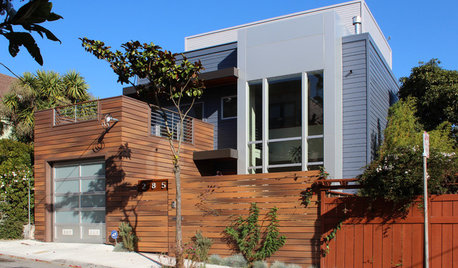
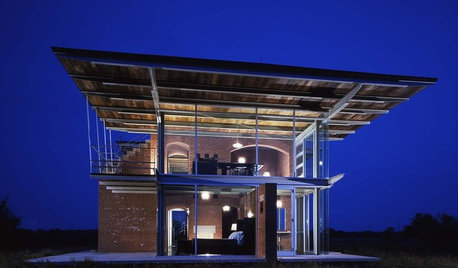
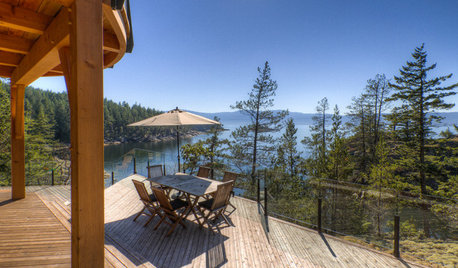


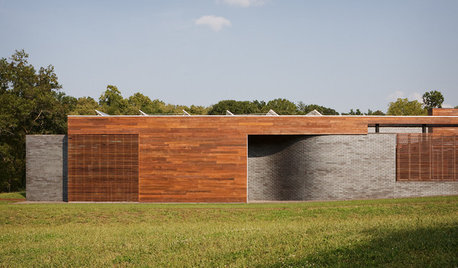
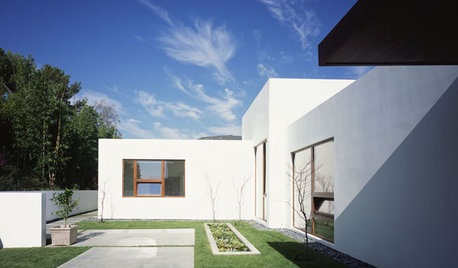
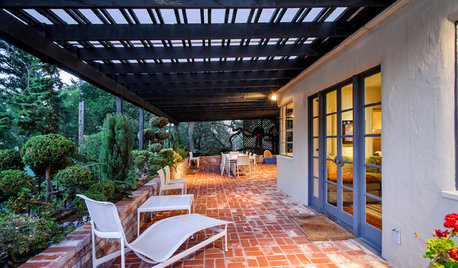
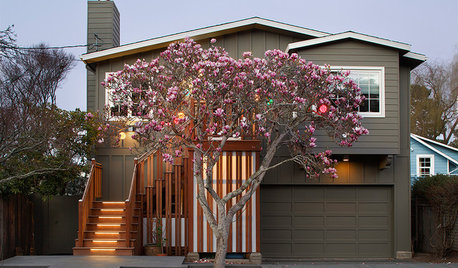
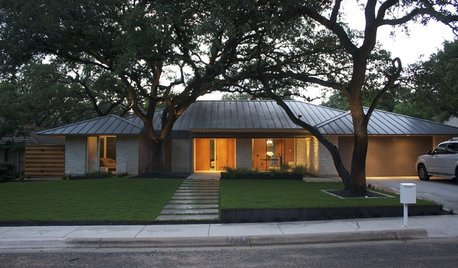






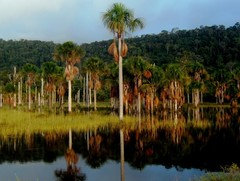

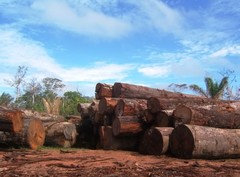

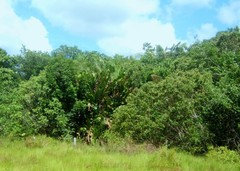


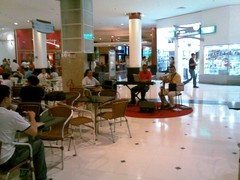





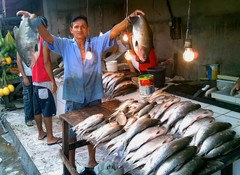

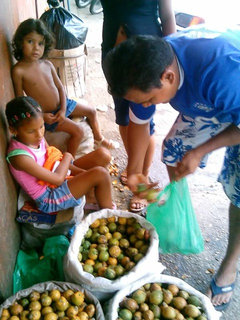

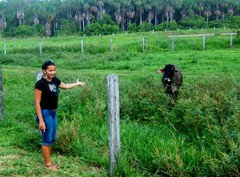
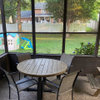

amazondk